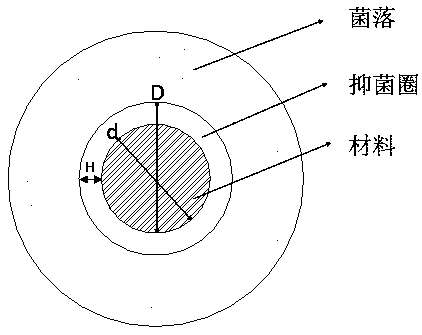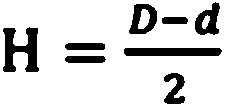Hydrogel prepared by using grafted modified material as well as preparation method and application of hydrogel
A graft modification, hydrogel technology, applied in medical science, bandages, etc., can solve problems such as poor mechanical properties, and achieve the effects of excellent antibacterial properties, good antibacterial properties, and strong mechanical properties
- Summary
- Abstract
- Description
- Claims
- Application Information
AI Technical Summary
Problems solved by technology
Method used
Image
Examples
Embodiment 1
[0034] The present embodiment provides a hydrogel, which is obtained by the following preparation method:
[0035] Weigh 5g of polylysine (molecular weight: 3000-5000) into a container, add 100ml of deionized water, stir to dissolve, add 0.125g of EDC and 0.125g of NHS, and react for 4h. The solution is taken out, dialyzed, and the solution in the dialysis bag is freeze-dried to obtain modified polylysine. Weigh 2g of modified polylysine into a container, add 10ml of deionized water, stir to dissolve, add 2g of acrylamide monomer to the container, stir to dissolve. Add 0.01g of ammonium persulfate photoinitiator and 0.01g of N,N'-methylenebisacrylamide into the container, and continue to stir for 30min. The solution was poured into a vessel and irradiated overnight with a 365nm ultraviolet light generator. The pH was adjusted to 8 using sodium borate buffer solution. After standing still for 30 minutes, a polylysine-polyacrylamide grafted gel-like polymer with a graft rate ...
Embodiment 2
[0037] This embodiment provides a kind of hydrogel, and this hydrogel is obtained by following preparation method:
[0038]Weigh 1.5g of polylysine (molecular weight: 3000-5000) into a container, add 60ml of purified water, stir to dissolve, add 0.25g of EDC and 1.25g of NHS, and react for 8 hours. The solution is taken out, dialyzed, and the solution in the dialysis bag is freeze-dried to obtain modified polylysine. Weigh 2g of modified polylysine into a container, add 20ml of deionized water, stir to dissolve, add 10g of acrylamide monomer into the container, stir to dissolve. Add 0.05g of ammonium persulfate photoinitiator and 0.05g of N,N'-methylenebisacrylamide into the container, and continue to stir for 1h. The solution was poured into a vessel and irradiated overnight with a 350nm ultraviolet light generator. The pH was adjusted to 10 using sodium borate buffer solution. After standing still for 30 minutes, a polylysine-polyacrylamide grafted gel-like polymer with a...
Embodiment 3
[0040] This embodiment provides a kind of hydrogel, and this hydrogel is obtained by following preparation method:
[0041] Weigh 5g of polylysine (molecular weight: 3000-5000) into a container, add 50ml of ultrapure water to dissolve it, add 0.25g of EDC and 0.5g of NHS, and react for 6h. The solution is taken out, dialyzed, and the solution in the dialysis bag is freeze-dried to obtain modified polylysine. Weigh 2g of modified polylysine into a container, add 15ml of deionized water, stir to dissolve, add 0.5g of acrylamide monomer to the container, stir to dissolve. Add 0.025g of ammonium persulfate photoinitiator and 0.025g of N,N'-methylenebisacrylamide into the container, and continue to stir for 2h. The solution was poured into a vessel and irradiated overnight with a 370nm ultraviolet light generator. The pH was adjusted to 9 using sodium borate buffer solution. After standing still for 30 minutes, a polylysine-polyacrylamide grafted gel polymer with a graft rate of...
PUM
| Property | Measurement | Unit |
|---|---|---|
| molecular weight | aaaaa | aaaaa |
| wavelength | aaaaa | aaaaa |
| degree of grafting | aaaaa | aaaaa |
Abstract
Description
Claims
Application Information
 Login to View More
Login to View More - R&D
- Intellectual Property
- Life Sciences
- Materials
- Tech Scout
- Unparalleled Data Quality
- Higher Quality Content
- 60% Fewer Hallucinations
Browse by: Latest US Patents, China's latest patents, Technical Efficacy Thesaurus, Application Domain, Technology Topic, Popular Technical Reports.
© 2025 PatSnap. All rights reserved.Legal|Privacy policy|Modern Slavery Act Transparency Statement|Sitemap|About US| Contact US: help@patsnap.com


